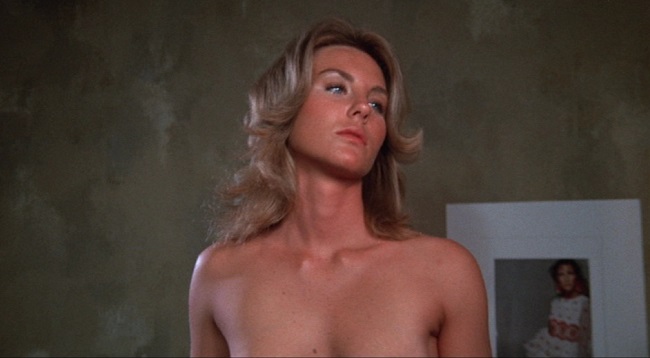
Arthur Marks may not have directed The Centerfold Girls (1974), but the opening credits of the film make it abundantly clear that this is Arthur Marks’ movie. In addition to providing the story of The Centerfold Girls, there is a title card which informs the viewer that Marks was “executive in charge of production”. It’s a sort of formal declaration of ownership that reveals just how active Marks was as a creative producer on the film.
The Centerfold Girls is a rather unusual film in that, although popularly considered a proto-slasher, the conventions of the sexploitation genre and the narrative structure of the film itself defy such categorization. Rather than focus on either the serial killer (Andrew Prine) or one of his victims (Jaime Lyn Bauer, Jennifer Ashley, and Tiffany Bolling), Marks opts instead to structure the film as a triptych of episodes with each focused on the life of one of the women that the killer is stalking. This puts the lives of the victims front and center, leaving the killer in the background as a kind of through line that connects the three plots.
But the glimpses that The Centerfold Girls provides of the three women aren’t slice-of-life vignettes or anything of the sort. What Marks gives the viewer instead is essentially three sexploitation episodes. The Centerfold Girls is Arthur Marks most brutal and sleazy film. The three episodes that make up The Centerfold Girls are packed with gratuitous nudity, sexual violence, and ruled by the masculine gaze which fetishizes it all. While the killer hunts these women believing them to be unclean for appearing as nude centerfold models, the audience for The Centerfold Girls is asked to fully invest in that same spectatorship that the killer himself is so ashamed of.
At its best, The Centerfold Girls functions unintentionally as a dramatization of how a series of patriarchal systems fail women and even contribute to their victimization. However, at its worst, The Centerfold Girls indulges in some of the most repulsive misogynist fantasies. Without Marks in the director’s chair there is no sense of compassion for the characters in The Centerfold Girls. Even in the most ludicrous or chauvinist films of Marks’ filmography there was always a sense that the lives of the characters mattered to the filmmaker insofar as that they were dramatically compelling.
